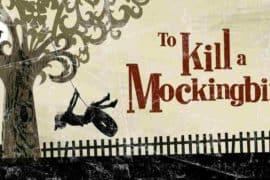If you’re looking for a historically accurate tale The other Boleyn Girl is not the book you should pick up. However if you want a story loosely based upon a most exciting period in English History but spiced with intricate characters and well crafted flights of fancy then this book really does make for the perfect choice. A thrilling and romantic depiction of the English Court during the controversial reign of Henry VIII and the English Reformation, the book attempts to give an inside glimpse into the family that changed the course of history and religion forever. Written from the perspective of Mary Boleyn, the historically underrepresented sister of the more famous Anne Boleyn, the book retells and often reinvents history with such vivid and detailed descriptions that the very alien world of a 16th century English court suddenly transforms into a most familiar entity. However many historians have pointed out there exist glaring historical errors in Philippa Gregory’s book though the author staunchly sticks to her claim that all the incidents mentioned in the book with the exception of the characters’ private thoughts are most likely true since there is in any case no proof of their being otherwise. The story starts with Mary Boleyn having returned from the court of France at the age of 12 and her marriage of convenience at the behest of her politically ambitious family to a minor noble William Carey. However the marriage is short lived since she is almost immediately forced into becoming Henry VIII’s mistress and separated from her husband for the same. Mary Boleyn has two children by the king, though this is a debatable fact historically. While pregnant with her second child, a son, her sister Anne who is the better read and more intelligent and independent of the two is pushed by the family to engage the king’s attention and keep it from wandering to someone outside the family. Anne who had returned from the French court shortly after Mary’s marriage and had been helping her suit with the king all this while now decides to take the king for herself, and do so without prostituting herself. Her disappointment at not being allowed to marry a man she loved, as well as her own ambition and constant rivalry with her sister drive her on and she mechanically and later maniacally plots to win Henry over. What follows is political intrigue and religious upheaval as Henry desperately tries to sever his previous marriage to Catherine of Aragon who could not produce him a male heir. This results in his alienating the catholic world, since the pope, imprisoned by the Spanish king who is Catherine’s nephew, refuses to annul their marriage. The religious debate is not highlighted in the book, which concentrates on the political intrigue rather than religious implications of the various incidents. Henry VIII hence heads the Church of England, annuls his own marriage to Catherine and consequently marries Anne, all with the single minded desperate desire of producing a legitimate male heir. To all those who know their history the next course of events are known. To those who don’t the book certainly keeps up the suspense. In any case the events are narrated with gripping skill and are not a mere repetition of known facts. The book is more fiction with a historical setting than a historical novel, since it often deviates widely from known facts simply for dramatic effect or character building. However for all that ,it remains an excellent story and brings to life two of the most fascinating characters in history, of atleast one of whom little was known, hence the title ‘The Other Boleyn Girl’. The only flaw in the book, other than the oft repeated historical bloopers of course, is that it seldom ventures outside the court. Little is told about the reaction of the people of England to the major events that shook the country. The common people intrude merely in a few incidents, such as the rioting mobs hunting Anne down or her cold reception at villages she passed through when in the company of the King. Apart from these brief mentions the world of this politically charged time frame remains solely limited to the English Court. However if the historical awkwardness and lack of wider perspective disappoint, the delightfully well sketched characters and the in-depth psychological perspective into court life more than make up for it. Moreover what some historians find to be a grave anachronism- that of Mary Boleyn’s feminism- is something which I feel only heightens the charm of the book. Though it would have been inconceivable for a woman of that time to realize the unfairness of her lot and lament at the lack of agency or any amount of freedom of choice accorded to women; read from a modern perspective its perhaps an error which would gladly go pardoned, since we can scarcely read such a story without these issues coming to mind and having the protagonist anticipate and echo your objections is interesting. In any case this book makes for a delightful story, and is especially interesting in retrospect. We can now appreciate the irony for example behind the fact that Henry so desperately sought a strong male heir for his kingdom and prosecuted so many wives for failing to deliver the same, when in fact he had already been given the strongest and most able heir imaginable by Anne herself- her daughter Elizabeth. That his heir would bring the country immense power and consolidate the kingdom like never before would be a source of great solace to the paranoid dead king, while the fact of the heir being his daughter and not son probably a massive shock. Quite the historical irony. My Rating: 4/5 ]]>
DUBeat
Journalism has been called the “first rough draft of history”. D.U.B may be termed as the first rough draft of DU history. Freedom to Express.




Comments are closed.